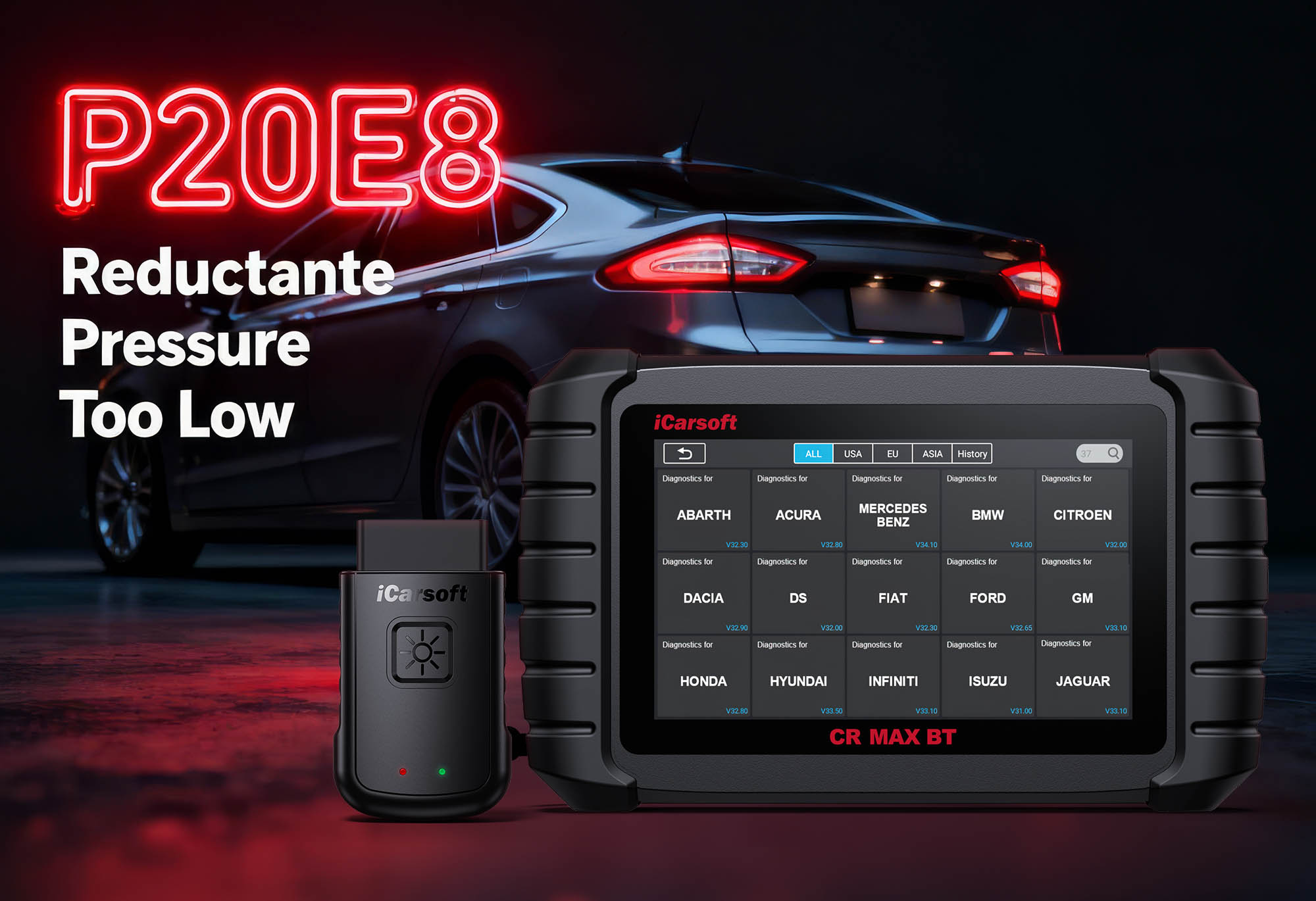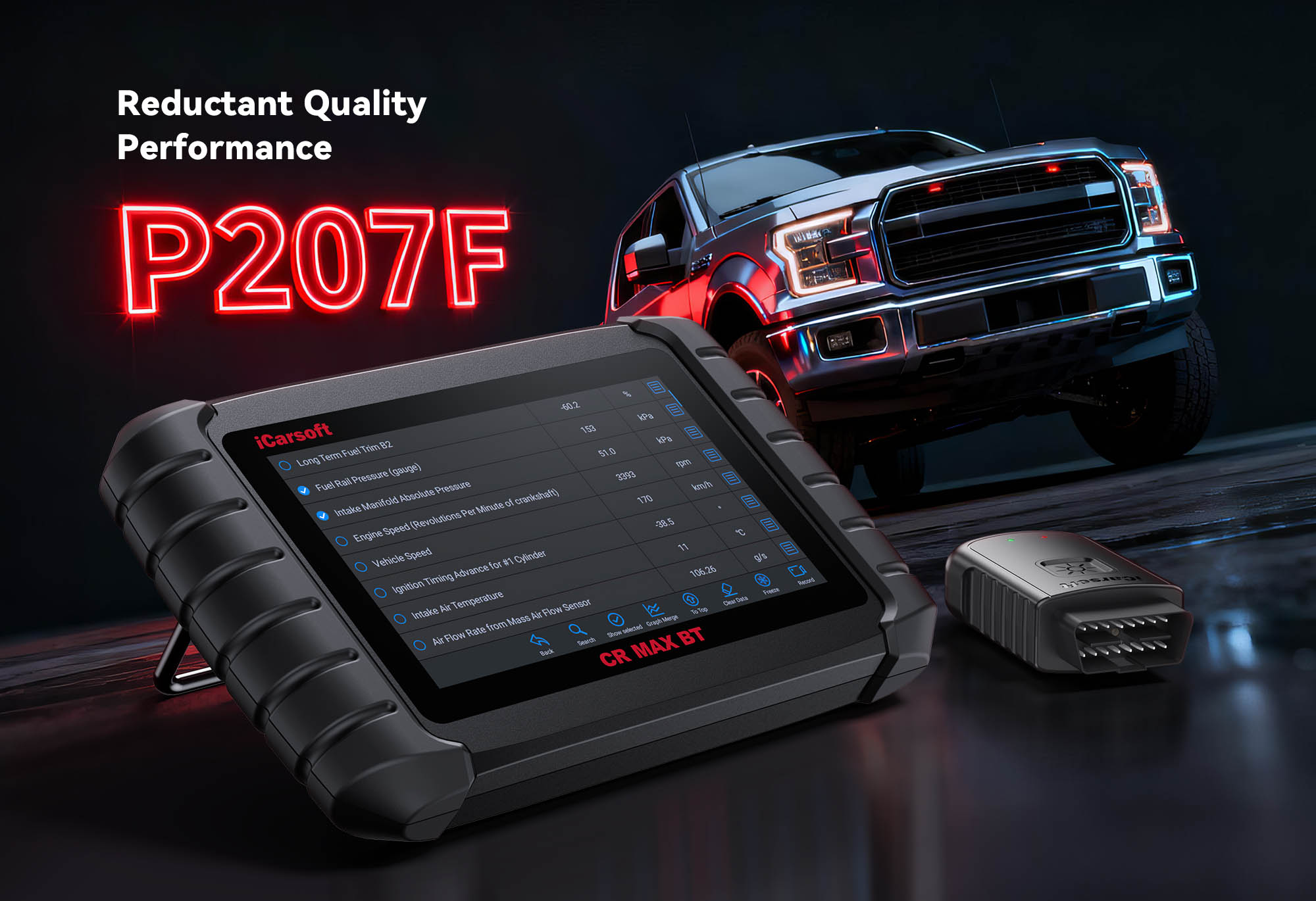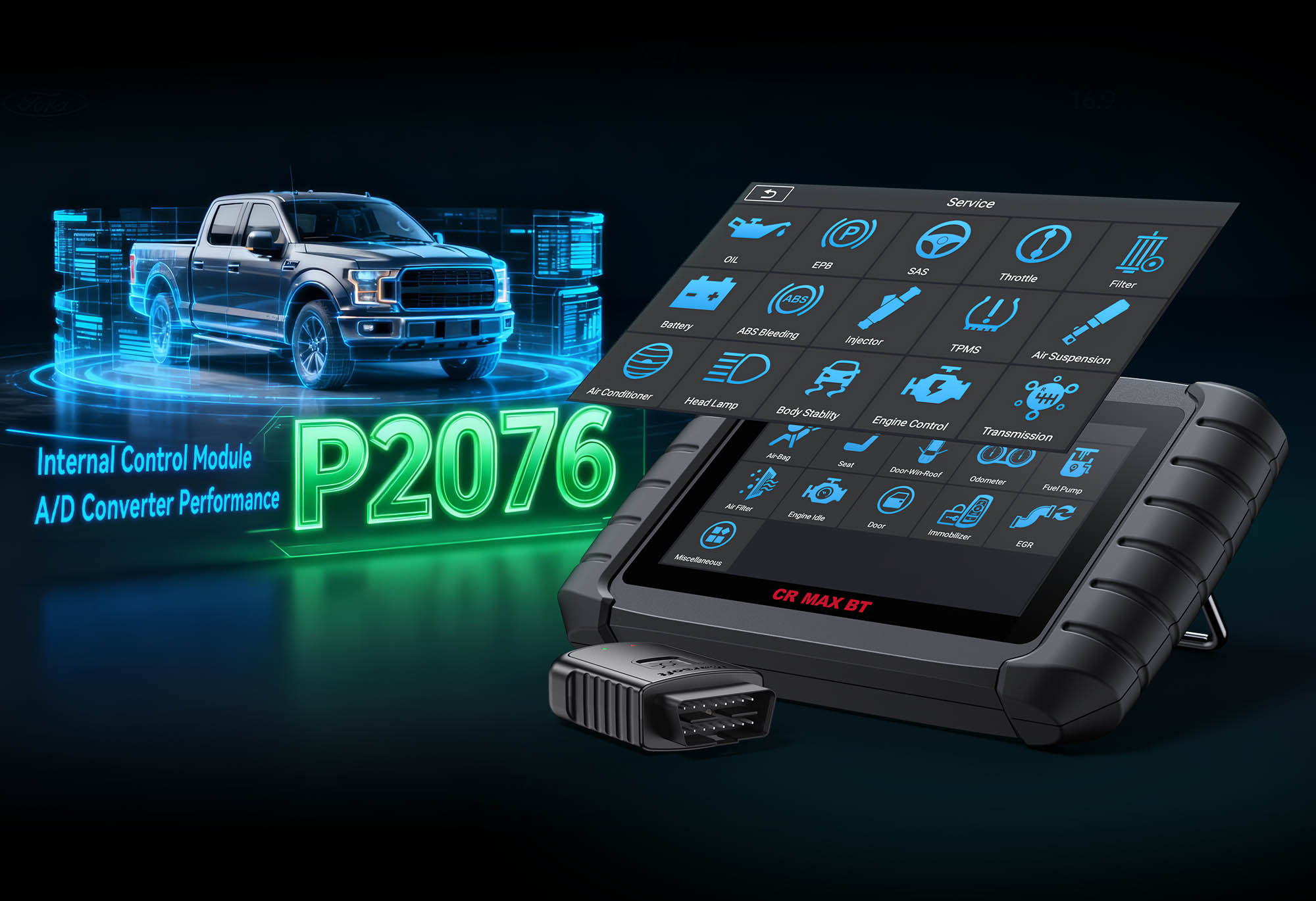When your vehicle’s check engine light flicks on and a diagnostic scan pulls up the P0352 code, you’re facing an "Ignition Coil ‘B’ Primary/Secondary Circuit Malfunction"—a critical issue that disrupts your engine’s spark generation. Ignition coils convert your vehicle’s 12V battery power into the 20,000–50,000V needed to create a spark at the spark plugs, igniting the air-fuel mixture in the cylinders.
The "B" in P0352 refers to a specific coil (or coil pack) assigned by the manufacturer (e.g., cylinder 2’s coil in a 4-cylinder engine, or bank 1’s second coil in a V6). A faulty coil circuit (triggering P0352) leads to misfires, reduced power, and even catalytic converter damage if ignored.
With the iCarsoft CR Eagle—a diagnostic tool optimized for ignition system testing—you can pinpoint whether the problem lies in a faulty coil, damaged wiring, or ECM issue, then clear the code once repairs are done. Let’s break down how to resolve P0352 step by step.
Understanding P0352: The Ignition Coil’s Role
To grasp why P0352 matters, first clarify the ignition coil’s function in your engine:
-
Primary Circuit: The coil’s low-voltage side, connected to the Engine Control Module (ECM). The ECM sends a signal to the primary circuit to "charge" the coil.
-
Secondary Circuit: The high-voltage side, which sends the amplified voltage to the spark plug via a wire (or directly, in coil-on-plug systems).
-
Coil Design: Most modern vehicles use "coil-on-plug" systems (one coil per cylinder) or "coil packs" (shared coils for 2 cylinders). P0352 targets the specific "B" coil in this setup.
P0352 specifically means the ECM detects a fault in coil "B’s" circuit: it may receive no voltage signal, an erratic signal, or a signal that indicates a short/open circuit. This breaks the spark chain for the cylinder(s) served by coil "B," causing misfires and inefficient combustion.
Symptoms of P0352
Illuminated Check Engine Light
Primary warning—often paired with cylinder misfire codes (e.g., P0302 for cylinder 2 misfire).
Engine Misfires
Shaking, sputtering, or roughness at idle/acceleration—worse under load (e.g., hill climbing).
Reduced Power & Acceleration
Engine struggles to generate power; hesitation when pressing the gas pedal.
Increased Fuel Consumption
10–25% lower MPG—misfires lead to unburned fuel exiting cylinders.
Catalytic Converter Overheating
Unburned fuel in exhaust risks permanent converter damage (costly to repair).
Limp Mode Activation
ECM limits power to protect components—speed restricted to <40 mph in severe cases.
Common Causes of P0352
-
Faulty Ignition Coil (Most Common): Internal windings burn out, short, or crack (lasts 80,000–120,000 miles). Heat and oil contamination (from leaking valve covers) accelerate failure.
-
Damaged Wiring: Wires connecting coil to ECM fray, cut, or melt (due to engine heat, rodent damage, or loose connections).
-
Corroded/Loose Connectors: Coil’s 2–3 pin plug gets dirty/loose—blocks voltage flow from ECM.
-
Failed Spark Plug: Worn/fouled/broken plug creates excessive secondary circuit resistance, straining the coil.
-
ECM Malfunction (Rare): ECM’s "coil driver" fails—can’t send proper signals to coil "B" (common in water-damaged/older ECMs).
-
Blown Fuse: Dedicated ignition coil fuse blows, cutting power to coil "B."
Why iCarsoft CR Eagle Excels at Diagnosing P0352
The CR Eagle goes beyond basic code readers to test ignition coil functionality and circuit health:
Coil Circuit Testing
-
Resistance Checks: Measures primary (0.5–2.0 ohms) and secondary (8,000–15,000 ohms) resistance—out-of-range = faulty coil.
-
Voltage Monitoring: Tracks coil connector voltage (12V battery power + 5V ECM control signal)—no voltage = wiring/fuse issue.
Bi-Directional Control
-
Manual Coil Activation: Triggers coil "B" to test spark output—listen for a "click" (charging) or use a spark tester to confirm blue spark.
Vehicle-Specific Guidance
-
Coil "B" Location: Shows exact position (e.g., cylinder 2’s coil on Honda Civic, bank 1/coil 2 on Ford F-150 V6).
-
Wiring Diagrams: Color-coded diagrams trace circuit from ECM to coil—simplifies damage identification.
Misfire & Live Data Analysis
-
Misfire History: Logs when misfires occur (idle vs. 3,000 RPM) to link to coil "B’s" cylinder.
-
Live Coil Data: Streams "Coil ‘B’ Duty Cycle" to verify ECM signal—rules out ECM issues.
Step-by-Step: Diagnosing and Clearing P0352 with iCarsoft CR Eagle
-
Confirm the Code and Identify Coil "B"
-
Connect CR Eagle to OBD-II port (under dashboard) and power on.
-
Select vehicle make/model/year (use AutoVIN for accuracy) → Navigate to OBD-II > Read Codes to confirm P0352. Note related codes (e.g., P0302).
-
Use Component Location to find coil "B" (e.g., top of cylinder 2 in coil-on-plug systems).
-
Check for Basic Issues First
-
Spark Plug Inspection: Remove coil "B’s" spark plug—look for worn electrodes, oil fouling, or carbon buildup. Replace if damaged (CR Eagle displays OEM part numbers).
-
Fuse Check: Use Fuse Location Guide to find ignition coil fuse → Test with "Continuity Test"—replace if blown.
-
Test Coil "B’s" Resistance
-
Disconnect negative battery terminal → Remove coil "B" (unplug connector + unscrew from cylinder head).
-
Set CR Eagle to Resistance Test:
-
Primary Circuit: Probe coil’s electrical connector pins (0.5–2.0 ohms normal).
-
Secondary Circuit: Probe electrical pin + spark plug terminal (8,000–15,000 ohms normal).
-
Out-of-range reading = faulty coil (mark for replacement).
-
Test Coil "B’s" Voltage Supply
-
Reconnect coil’s electrical connector (leave coil uninstalled) → Set CR Eagle to Voltage Test.
-
Battery Power Pin: Probe pin + metal ground (ignition "On") → 11.5–12.5V normal; no voltage = wiring/fuse issue.
-
Control Signal Pin: Helper starts engine → Voltage fluctuates 0V–5V normal; no fluctuation = ECM/wiring issue.
-
Manually Activate Coil "B"
-
Reconnect battery → Navigate to Bi-Directional Controls > Ignition Coils > Coil ‘B’.
-
Activate in 1-second bursts (follow tool warnings) → Use spark tester:
-
Strong blue spark = coil works; weak yellow/no spark = faulty coil.
-
Repair or Replace Components
-
Faulty Coil: Install new OEM/aftermarket coil (match part number) → Torque to 8–12 ft-lbs (coil-on-plug).
-
Wiring Issues: Repair frayed wires; replace corroded connectors (use dielectric grease).
-
Valve Cover Leaks: Replace gasket if coil was oil-fouled (prevents new coil damage).
-
ECM Problems: Consult professional (requires specialized tools).
-
Clear the Code and Verify Repairs
-
Reconnect CR Eagle → Clear Codes to erase P0352.
-
Idle engine 5 minutes → Check engine light stays off.
-
Test drive (idle, acceleration, highway) → Use Misfire Test to confirm no issues.
-
Re-scan after 50 miles → No P0352 = successful fix.
How to Prevent P0352 from Recurring
-
Replace Coils in Sets: For high-mileage vehicles (>100,000 miles), replace all coils for balanced performance.
-
Fix Oil Leaks Promptly: Oil is the #1 coil failure cause—inspect valve cover gaskets during oil changes.
-
Use OEM Spark Plugs: Aftermarket plugs create excess resistance—follow CR Eagle’s Part Lookup.
-
Protect Wiring: Secure coil wiring with zip ties to avoid rubbing on hot components (e.g., exhaust manifolds).
-
Scan Regularly: Run Ignition System Health Checks monthly to monitor coil resistance/voltage.
Conclusion
P0352 is a fixable issue for most DIYers, especially with the iCarsoft CR Eagle guiding your diagnosis. By understanding the ignition coil’s role, using the tool’s coil-specific tests, and following preventive steps, you can restore engine performance, save on fuel costs, and avoid costly catalytic converter damage.
Don’t let a faulty ignition coil leave you stranded—grab your iCarsoft CR Eagle and get your engine’s spark back on track today.





